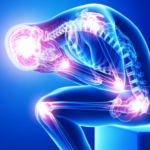Physical therapy plays a fundamental role in post-surgery recovery by helping patients regain strength, mobility, and function. This structured approach to rehabilitation addresses the physical limitations that typically follow surgical procedures and supports the body’s natural healing process through targeted exercises and techniques. Here is more information on the benefits of seeing a physical therapist after surgery:
Restoring Range of Motion and Flexibility
Physical therapy addresses post-surgical limitations through specific stretching exercises and manual techniques. Post-surgical patients often experience stiffness and reduced range of motion in the affected area. Therapists design movement programs that gradually increase flexibility while respecting the healing tissue’s capacity for stress.
Range of motion exercises begin with passive movements, where the therapist guides the limb through its motion without the patient’s effort. As healing progresses, active-assisted movements allow patients to participate partially in the motion. Active range of motion exercises restore independent movement patterns. This progression prevents the formation of adhesions and maintains joint health during recovery.
Manual therapy techniques, including joint mobilization and soft tissue massage, complement exercise programs. These hands-on approaches reduce muscle tension, improve circulation, and promote tissue healing. The combination of exercise and manual therapy creates an optimal environment for restoring normal movement patterns.
Building Strength and Endurance
Surgery can result in muscle weakness due to immobilization, pain, and the body’s natural protective responses. Physical therapy addresses these strength deficits through progressive resistance training tailored to each patient’s healing timeline and surgical restrictions. They also help prevent future injuries from occurring.
Strength training begins with isometric exercises, where muscles contract without joint movement. These exercises maintain muscle activation during early healing phases when movement may be limited. As recovery advances, therapists introduce dynamic strengthening exercises using resistance bands, weights, or body weight.
Endurance training complements strength building by improving the muscles’ ability to sustain activity over time. This component becomes increasingly relevant as patients prepare to return to their normal activities and work demands. Progressive cardiovascular conditioning helps rebuild the stamina often lost during periods of reduced activity following surgery.
Encouraging Functional Recovery
Physical therapy provides effective pain management strategies that reduce reliance on medications while promoting active recovery. Therapeutic modalities such as ice, heat, ultrasound, and electrical stimulation can reduce pain and inflammation during the healing process. Movement-based pain management techniques teach patients how to modify activities and use proper body mechanics to minimize discomfort.
Functional training represents the final phase of physical therapy rehabilitation. This approach focuses on movements and activities specific to each patient’s daily life, work demands, and recreational interests. Therapists design exercises that simulate real-world tasks, preparing patients for a successful return to their previous activity levels. Balance and proprioception training often accompanies functional recovery, particularly after lower extremity or spinal surgeries. These exercises retrain the body’s awareness of position and movement, reducing fall risk and improving overall movement quality.
Get Physical Therapy
Physical therapy offers a structured, evidence-based approach to post-surgery recovery that addresses multiple aspects of healing and rehabilitation. The combination of movement restoration, strength building, and functional training creates a comprehensive recovery program tailored to each patient’s specific needs and surgical procedure. Working with a qualified physical therapist provides professional guidance throughout the recovery process, helping patients navigate the challenges of post-surgical rehabilitation while optimizing their return to full function.









Leave a Reply